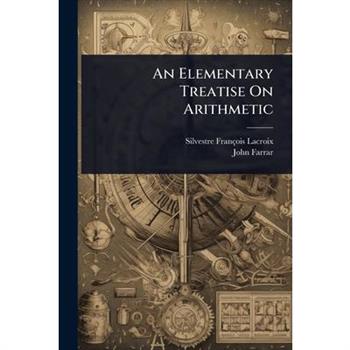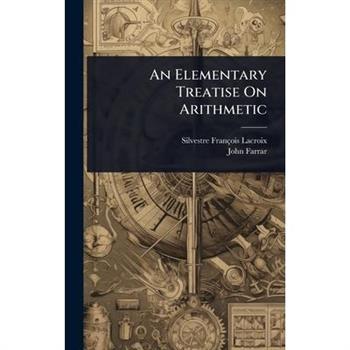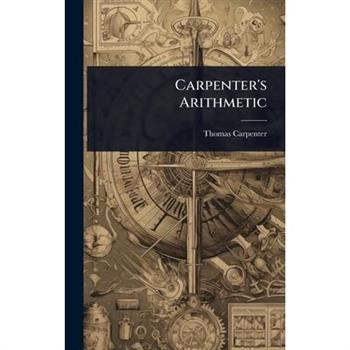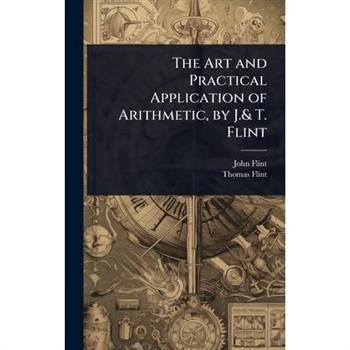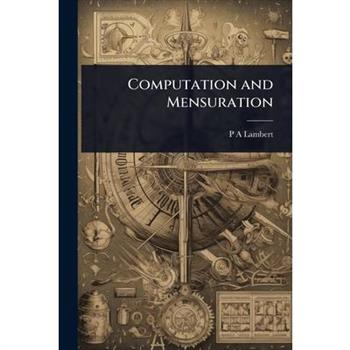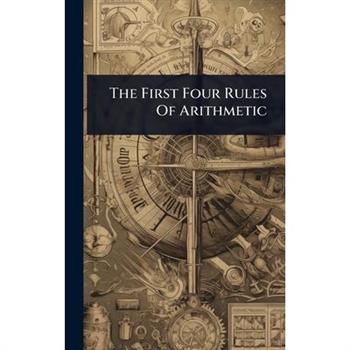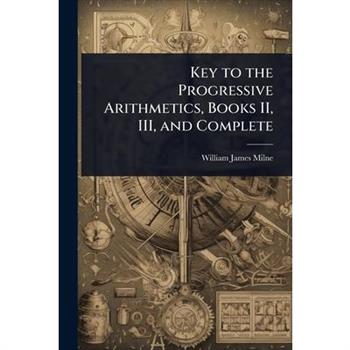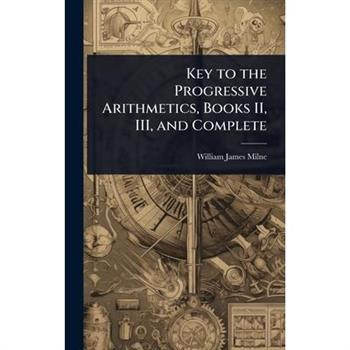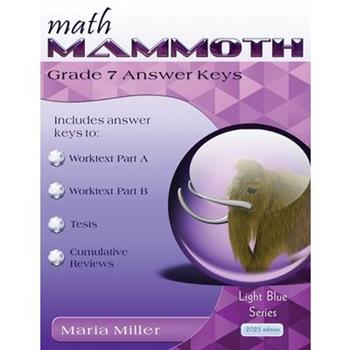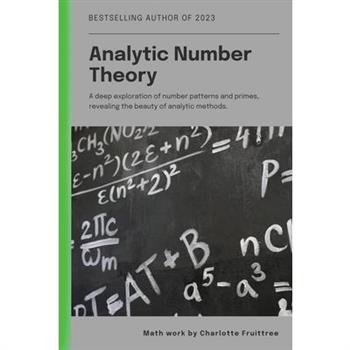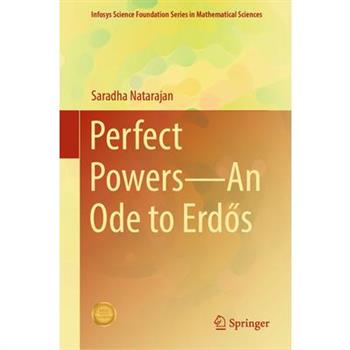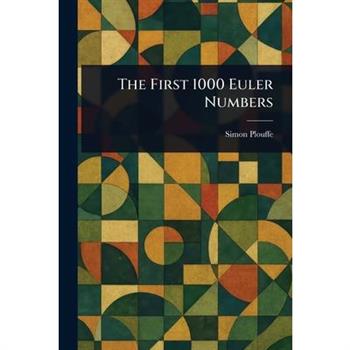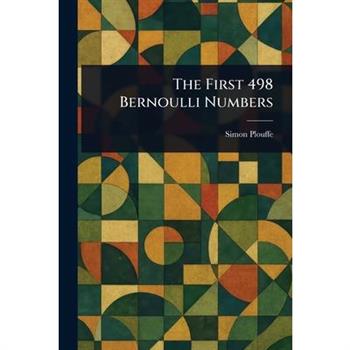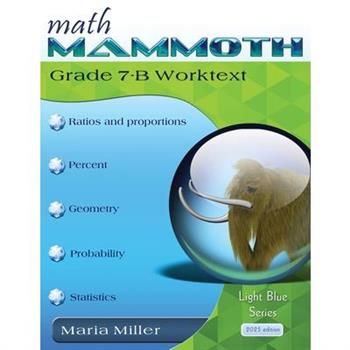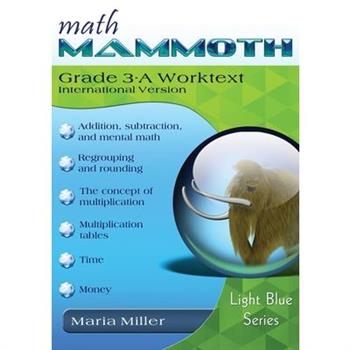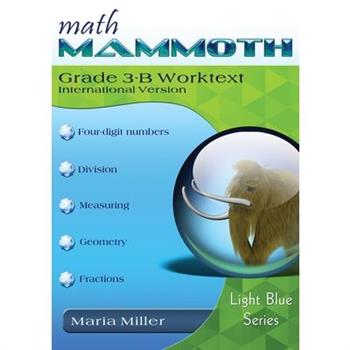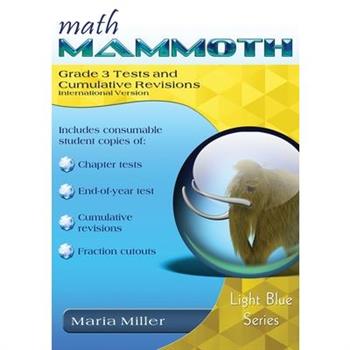Carpenter’s Arithmetic
"Carpenter's Arithmetic" is a comprehensive guide to practical mathematics, designed for carpenters and other tradesmen. Authored by Thomas Carpenter, this book provides a thorough grounding in the fundamental principles of arithmetic, with a particular emphasis on their application to real-world construction and woodworking problems. The book covers essential topics such as fractions, decimals, measurement, and geometry, all explained with clarity and precision. Originally published in the nineteenth century, "Carpenter's Arithmetic" remains a valuable resource for anyone seeking a solid understanding of mathematical concepts relevant to carpentry and related fields. Its clear explanations and practical examples make it an excellent tool for both students and professionals. This classic text offers a unique glimpse into the educational practices of the past, while still providing relevant and useful knowledge for today's readers.This work has been selected by scholars as being culturally important, and is part of the knowledge base of civilization as we know it. This work was reproduced from the original artifact, and remains as true to the original work as possible. Therefore, you will see the original copyright references, library stamps (as most of these works have been housed in our most important libraries around the world), and other notations in the work.This work is in the public domain in the United States of America, and possibly other nations. Within the United States, you may freely copy and distribute this work, as no entity (individual or corporate) has a copyright on the body of the work.As a reproduction of a historical artifact, this work may contain missing or blurred pages, poor pictures, errant marks, etc. Scholars believe, and we concur, that this work is important enough to be preserved, reproduced, and made generally available to the public. We appreciate your support of the preservation process, and thank you for being an important part of keeping this knowledge alive and relevant.
The Art and Practical Application of Arithmetic, by J.& T. Flint
"The Art and Practical Application of Arithmetic" by J. & T. Flint is a comprehensive 19th-century textbook designed to impart a thorough understanding of arithmetic principles. Aimed at students and educators alike, this book delves into the practical aspects of arithmetic, offering clear explanations and numerous examples to aid comprehension.This historical work provides insights into the educational methods and mathematical understanding prevalent in the 1800s. It serves as a valuable resource for those interested in the history of mathematics education and the development of arithmetic as a fundamental subject.This work has been selected by scholars as being culturally important, and is part of the knowledge base of civilization as we know it. This work was reproduced from the original artifact, and remains as true to the original work as possible. Therefore, you will see the original copyright references, library stamps (as most of these works have been housed in our most important libraries around the world), and other notations in the work.This work is in the public domain in the United States of America, and possibly other nations. Within the United States, you may freely copy and distribute this work, as no entity (individual or corporate) has a copyright on the body of the work.As a reproduction of a historical artifact, this work may contain missing or blurred pages, poor pictures, errant marks, etc. Scholars believe, and we concur, that this work is important enough to be preserved, reproduced, and made generally available to the public. We appreciate your support of the preservation process, and thank you for being an important part of keeping this knowledge alive and relevant.
An Elementary Treatise On Arithmetic
"An Elementary Treatise On Arithmetic," originally derived from the work of S. F. Lacroix and translated by John Farrar, offers a comprehensive introduction to the principles of arithmetic. This edition, published in 1834, presents a detailed exposition of fundamental mathematical concepts, tailored for students and educators of the period. Featuring alterations and additions to the original French text, this treatise provides a valuable insight into the teaching methods and mathematical understanding of the early 19th century. Its enduring value lies in its systematic approach to arithmetic and its reflection of the educational practices of a bygone era. This historic text is a useful resource for those interested in the history of mathematics education.This work has been selected by scholars as being culturally important, and is part of the knowledge base of civilization as we know it. This work was reproduced from the original artifact, and remains as true to the original work as possible. Therefore, you will see the original copyright references, library stamps (as most of these works have been housed in our most important libraries around the world), and other notations in the work.This work is in the public domain in the United States of America, and possibly other nations. Within the United States, you may freely copy and distribute this work, as no entity (individual or corporate) has a copyright on the body of the work.As a reproduction of a historical artifact, this work may contain missing or blurred pages, poor pictures, errant marks, etc. Scholars believe, and we concur, that this work is important enough to be preserved, reproduced, and made generally available to the public. We appreciate your support of the preservation process, and thank you for being an important part of keeping this knowledge alive and relevant.
Mental Arithmetic
Mental Arithmetic, by John Homer French, offers a comprehensive system for developing rapid computation skills alongside a strong understanding of logical problem-solving. Originally published in 1878, this book combines arithmetic exercises with detailed analyses of mathematical processes, providing students and teachers with a structured approach to mastering mental math. This edition presents a complete methodology for performing quick calculations, reinforcing mathematical concepts, and improving overall reasoning abilities. It serves not only as a historical artifact of 19th-century educational practices but also as a resource for those seeking to enhance their mental arithmetic skills. Its enduring value lies in its emphasis on both accuracy and speed, critical components of mathematical proficiency.This work has been selected by scholars as being culturally important, and is part of the knowledge base of civilization as we know it. This work was reproduced from the original artifact, and remains as true to the original work as possible. Therefore, you will see the original copyright references, library stamps (as most of these works have been housed in our most important libraries around the world), and other notations in the work.This work is in the public domain in the United States of America, and possibly other nations. Within the United States, you may freely copy and distribute this work, as no entity (individual or corporate) has a copyright on the body of the work.As a reproduction of a historical artifact, this work may contain missing or blurred pages, poor pictures, errant marks, etc. Scholars believe, and we concur, that this work is important enough to be preserved, reproduced, and made generally available to the public. We appreciate your support of the preservation process, and thank you for being an important part of keeping this knowledge alive and relevant.
An Elementary Treatise On Arithmetic
"An Elementary Treatise On Arithmetic," originally derived from the work of S. F. Lacroix and translated by John Farrar, offers a comprehensive introduction to the principles of arithmetic. This edition, published in 1834, presents a detailed exposition of fundamental mathematical concepts, tailored for students and educators of the period. Featuring alterations and additions to the original French text, this treatise provides a valuable insight into the teaching methods and mathematical understanding of the early 19th century. Its enduring value lies in its systematic approach to arithmetic and its reflection of the educational practices of a bygone era. This historic text is a useful resource for those interested in the history of mathematics education.This work has been selected by scholars as being culturally important, and is part of the knowledge base of civilization as we know it. This work was reproduced from the original artifact, and remains as true to the original work as possible. Therefore, you will see the original copyright references, library stamps (as most of these works have been housed in our most important libraries around the world), and other notations in the work.This work is in the public domain in the United States of America, and possibly other nations. Within the United States, you may freely copy and distribute this work, as no entity (individual or corporate) has a copyright on the body of the work.As a reproduction of a historical artifact, this work may contain missing or blurred pages, poor pictures, errant marks, etc. Scholars believe, and we concur, that this work is important enough to be preserved, reproduced, and made generally available to the public. We appreciate your support of the preservation process, and thank you for being an important part of keeping this knowledge alive and relevant.
Carpenter’s Arithmetic
"Carpenter's Arithmetic" is a comprehensive guide to practical mathematics, designed for carpenters and other tradesmen. Authored by Thomas Carpenter, this book provides a thorough grounding in the fundamental principles of arithmetic, with a particular emphasis on their application to real-world construction and woodworking problems. The book covers essential topics such as fractions, decimals, measurement, and geometry, all explained with clarity and precision. Originally published in the nineteenth century, "Carpenter's Arithmetic" remains a valuable resource for anyone seeking a solid understanding of mathematical concepts relevant to carpentry and related fields. Its clear explanations and practical examples make it an excellent tool for both students and professionals. This classic text offers a unique glimpse into the educational practices of the past, while still providing relevant and useful knowledge for today's readers.This work has been selected by scholars as being culturally important, and is part of the knowledge base of civilization as we know it. This work was reproduced from the original artifact, and remains as true to the original work as possible. Therefore, you will see the original copyright references, library stamps (as most of these works have been housed in our most important libraries around the world), and other notations in the work.This work is in the public domain in the United States of America, and possibly other nations. Within the United States, you may freely copy and distribute this work, as no entity (individual or corporate) has a copyright on the body of the work.As a reproduction of a historical artifact, this work may contain missing or blurred pages, poor pictures, errant marks, etc. Scholars believe, and we concur, that this work is important enough to be preserved, reproduced, and made generally available to the public. We appreciate your support of the preservation process, and thank you for being an important part of keeping this knowledge alive and relevant.
The Art and Practical Application of Arithmetic, by J.& T. Flint
"The Art and Practical Application of Arithmetic" by J. & T. Flint is a comprehensive 19th-century textbook designed to impart a thorough understanding of arithmetic principles. Aimed at students and educators alike, this book delves into the practical aspects of arithmetic, offering clear explanations and numerous examples to aid comprehension.This historical work provides insights into the educational methods and mathematical understanding prevalent in the 1800s. It serves as a valuable resource for those interested in the history of mathematics education and the development of arithmetic as a fundamental subject.This work has been selected by scholars as being culturally important, and is part of the knowledge base of civilization as we know it. This work was reproduced from the original artifact, and remains as true to the original work as possible. Therefore, you will see the original copyright references, library stamps (as most of these works have been housed in our most important libraries around the world), and other notations in the work.This work is in the public domain in the United States of America, and possibly other nations. Within the United States, you may freely copy and distribute this work, as no entity (individual or corporate) has a copyright on the body of the work.As a reproduction of a historical artifact, this work may contain missing or blurred pages, poor pictures, errant marks, etc. Scholars believe, and we concur, that this work is important enough to be preserved, reproduced, and made generally available to the public. We appreciate your support of the preservation process, and thank you for being an important part of keeping this knowledge alive and relevant.
Computation and Mensuration
"Computation and Mensuration" by P. A. Lambert, originally published in 1907, offers a comprehensive exploration of fundamental mathematical principles. This book covers arithmetic and algebra, providing a structured approach to computation and problem-solving. Designed as a practical guide, it emphasizes the application of mathematical concepts to mensuration, making it an invaluable resource for students and educators alike.Lambert's clear and methodical explanations make complex topics accessible, ensuring a solid understanding of core mathematical skills. This edition retains the original text, preserving its historical context and pedagogical value, and is suitable for anyone interested in the historical development of mathematical education or seeking a solid grounding in basic computational techniques.This work has been selected by scholars as being culturally important, and is part of the knowledge base of civilization as we know it. This work was reproduced from the original artifact, and remains as true to the original work as possible. Therefore, you will see the original copyright references, library stamps (as most of these works have been housed in our most important libraries around the world), and other notations in the work.This work is in the public domain in the United States of America, and possibly other nations. Within the United States, you may freely copy and distribute this work, as no entity (individual or corporate) has a copyright on the body of the work.As a reproduction of a historical artifact, this work may contain missing or blurred pages, poor pictures, errant marks, etc. Scholars believe, and we concur, that this work is important enough to be preserved, reproduced, and made generally available to the public. We appreciate your support of the preservation process, and thank you for being an important part of keeping this knowledge alive and relevant.
Computation and Mensuration
"Computation and Mensuration" by P. A. Lambert, originally published in 1907, offers a comprehensive exploration of fundamental mathematical principles. This book covers arithmetic and algebra, providing a structured approach to computation and problem-solving. Designed as a practical guide, it emphasizes the application of mathematical concepts to mensuration, making it an invaluable resource for students and educators alike.Lambert's clear and methodical explanations make complex topics accessible, ensuring a solid understanding of core mathematical skills. This edition retains the original text, preserving its historical context and pedagogical value, and is suitable for anyone interested in the historical development of mathematical education or seeking a solid grounding in basic computational techniques.This work has been selected by scholars as being culturally important, and is part of the knowledge base of civilization as we know it. This work was reproduced from the original artifact, and remains as true to the original work as possible. Therefore, you will see the original copyright references, library stamps (as most of these works have been housed in our most important libraries around the world), and other notations in the work.This work is in the public domain in the United States of America, and possibly other nations. Within the United States, you may freely copy and distribute this work, as no entity (individual or corporate) has a copyright on the body of the work.As a reproduction of a historical artifact, this work may contain missing or blurred pages, poor pictures, errant marks, etc. Scholars believe, and we concur, that this work is important enough to be preserved, reproduced, and made generally available to the public. We appreciate your support of the preservation process, and thank you for being an important part of keeping this knowledge alive and relevant.
The First Four Rules Of Arithmetic
"The First Four Rules Of Arithmetic" presents a foundational exploration of basic mathematical principles. This book delves into the core operations of addition, subtraction, multiplication, and division, offering readers a clear and methodical introduction to these essential concepts. Designed to build a strong understanding of numerical relationships, the text provides practical examples and exercises to reinforce learning. While its author remains anonymous, the value of this work lies in its direct approach to arithmetic, making it a timeless resource for students and anyone seeking to enhance their mathematical literacy. It is particularly useful for elementary education and serves as an excellent starting point for further study in mathematics.This work has been selected by scholars as being culturally important, and is part of the knowledge base of civilization as we know it. This work was reproduced from the original artifact, and remains as true to the original work as possible. Therefore, you will see the original copyright references, library stamps (as most of these works have been housed in our most important libraries around the world), and other notations in the work.This work is in the public domain in the United States of America, and possibly other nations. Within the United States, you may freely copy and distribute this work, as no entity (individual or corporate) has a copyright on the body of the work.As a reproduction of a historical artifact, this work may contain missing or blurred pages, poor pictures, errant marks, etc. Scholars believe, and we concur, that this work is important enough to be preserved, reproduced, and made generally available to the public. We appreciate your support of the preservation process, and thank you for being an important part of keeping this knowledge alive and relevant.
Key to the Progressive Arithmetics, Books II, III, and Complete
"Key to the Progressive Arithmetics, Books II, III, and Complete" is a comprehensive guide designed to accompany and enhance the learning experience within the Progressive Arithmetics series. Authored by William James Milne, this key provides detailed solutions and explanations for the exercises and problems presented in Books II, III, and the Complete edition. This resource is invaluable for students seeking to master arithmetic concepts and for educators looking for effective teaching aids. The key offers a step-by-step approach to problem-solving, promoting a deeper understanding of mathematical principles. Originally published in 1907, this book reflects the educational practices and standards of the early 20th century, making it a fascinating historical artifact as well as a practical learning tool.This work has been selected by scholars as being culturally important, and is part of the knowledge base of civilization as we know it. This work was reproduced from the original artifact, and remains as true to the original work as possible. Therefore, you will see the original copyright references, library stamps (as most of these works have been housed in our most important libraries around the world), and other notations in the work.This work is in the public domain in the United States of America, and possibly other nations. Within the United States, you may freely copy and distribute this work, as no entity (individual or corporate) has a copyright on the body of the work.As a reproduction of a historical artifact, this work may contain missing or blurred pages, poor pictures, errant marks, etc. Scholars believe, and we concur, that this work is important enough to be preserved, reproduced, and made generally available to the public. We appreciate your support of the preservation process, and thank you for being an important part of keeping this knowledge alive and relevant.
Key to the Progressive Arithmetics, Books II, III, and Complete
"Key to the Progressive Arithmetics, Books II, III, and Complete" is a comprehensive guide designed to accompany and enhance the learning experience within the Progressive Arithmetics series. Authored by William James Milne, this key provides detailed solutions and explanations for the exercises and problems presented in Books II, III, and the Complete edition. This resource is invaluable for students seeking to master arithmetic concepts and for educators looking for effective teaching aids. The key offers a step-by-step approach to problem-solving, promoting a deeper understanding of mathematical principles. Originally published in 1907, this book reflects the educational practices and standards of the early 20th century, making it a fascinating historical artifact as well as a practical learning tool.This work has been selected by scholars as being culturally important, and is part of the knowledge base of civilization as we know it. This work was reproduced from the original artifact, and remains as true to the original work as possible. Therefore, you will see the original copyright references, library stamps (as most of these works have been housed in our most important libraries around the world), and other notations in the work.This work is in the public domain in the United States of America, and possibly other nations. Within the United States, you may freely copy and distribute this work, as no entity (individual or corporate) has a copyright on the body of the work.As a reproduction of a historical artifact, this work may contain missing or blurred pages, poor pictures, errant marks, etc. Scholars believe, and we concur, that this work is important enough to be preserved, reproduced, and made generally available to the public. We appreciate your support of the preservation process, and thank you for being an important part of keeping this knowledge alive and relevant.
Grade 3 Review Workbook
Math Mammoth Grade 3 Review Workbook is intended to give students a thorough review of third grade math. It has both topical as well as mixed (spiral) review worksheets, and includes both topical tests and a comprehensive end-of-the-year test. The tests can also be used as review worksheets, instead of tests.You can use this workbook for various purposes: for summer math practice, to keep a child from forgetting math skills during other break times, to prepare students who are going into fourth grade, or to give third grade students extra practice during the school year.The topics reviewed in this workbook are: mental addition and subtractionregrouping and roundingmultiplication concept and tablesclockmoneyplace value with thousandsdivisionmeasuringgeometryfractionsThe content for these is taken from Math Mammoth Grade 3 Complete Curriculum, so it works especially well to prepare students for grade 4 in Math Mammoth. However, the content follows a typical study for grade 3, so this workbook can be used no matter which math curriculum you follow.Please note this book does not contain lessons or instruction for the topics. It is not intended for initial teaching. It also will not work if the student needs to completely re-study these topics (the student has not learned the topics at all). For that purpose, please consider Math Mammoth Grade 3 Complete Curriculum, which has all the necessary instruction and lessons.This is the 2025 edition.
Number Theory
This book is designed to serve as a comprehensive textbook for undergraduate and postgraduate students across various academic disciplines. It is particularly well-suited for B.A. and B.Sc. (Pass and Honours) students, as well as M.A. and M.Sc. candidates enrolled in universities throughout India. Additionally, the book caters to second and third-year undergraduate students at universities in North America and Europe, making it a versatile resource for a global audience.The content is structured to support students undertaking an elementary course in Real Analysis or an advanced course in Calculus. It also complements elementary courses in Modern Abstract Algebra, providing foundational knowledge crucial for further studies in mathematics and related fields.To ensure the book is self-contained and accessible to readers with varying backgrounds, basic concepts of Set Theory and Abstract Algebra are thoughtfully included in the appendices. These appendices help bridge gaps in prerequisite knowledge and allow students to grasp advanced topics with greater ease.The book's clear explanations, systematic progression of topics, and inclusion of supplementary material make it an ideal choice for both classroom use and self-study. It balances theoretical rigor with practical applications, enabling students to develop a strong conceptual understanding and problem-solving skills.Overall, this text stands out as a valuable educational tool, empowering students to master core mathematical concepts essential for academic success and future research.
Math Mammoth Grade 7 Answer Keys
Math Mammoth Grade 7 Answer Keys (2025 edition) contains answers to Math Mammoth Grade 7-A and 7-B student worktexts, to chapter tests, to the end-of-year test, and to the cumulative review lessons. This is the full-color version.
Math Mammoth Grade 7 Tests and Cumulative Reviews
Math Mammoth Grade 7 Tests and Cumulative Reviews (2025 edition) includes consumable student copies of end-of-chapter tests, the end-of-year test, and additional cumulative review lessons that match the Math Mammoth Grade 7 curriculum. Please note: The answer keys are not included. They are sold in a separate book that includes all answer keys for the Math Mammoth Grade 7 Complete Curriculum.
Analytic Number Theory
Unveil the mystique of Analytic Number Theory with our groundbreaking guide that demystifies prime numbers, delves deep into the infamous Riemann Hypothesis, and unlocks monumental mathematical mysteries.Navigate through essential topics like modular arithmetic, sieve methods, and Dirichlet characters with no-nonsense clarity and wit. Discover powerful tools for cryptography, explore the intricacies of Diophantine equations, and make sense of complex analytic methods.Whether you're a math veteran or a curious beginner, this book will ignite your passion for numbers and transform your understanding of the mathematical universe.
Exponential Sums, Hypergeometric Sheaves, and Monodromy Groups
An examination of some of the remarkable connections between group theory and arithmetic algebraic geometry over finite fields Exponential sums have been of great interest ever since Gauss, and their importance in analytic number theory goes back a century to Kloosterman. Grothendieck's creation of the machinery of l-adic cohomology led to the understanding that families of exponential sums give rise to local systems, while Deligne, who gave his general equidistribution theorem after proving the Riemann hypothesis part of the Weil conjectures, established the importance of the monodromy groups of these local systems. Deligne's theorem shows that the monodromy group of the local system incarnating a given family of exponential sums determines key statistical properties of the family of exponential sums in question. Despite the apparent simplicity of this relation of monodromy groups to statistical properties, the actual determination of the monodromy group in any particular situation is highly nontrivial and leads to many interesting questions. This book is devoted to the determination of the monodromy groups attached to various explicit families of exponential sums, especially those attached to hypergeometric sheaves, arguably the simplest local systems on G_m, and to some simple (in the sense of simple to write down) one-parameter families of one-variable sums. These last families turn out to have surprising connections to hypergeometric sheaves. One of the main technical advances of this book is to bring to bear a group-theoretic condition (S+), which, when it applies, implies very strong structural constraints on the monodromy group, and to show that (S+) does indeed apply to the monodromy groups of most hypergeometric sheaves.
How Did You Count?
"I hope that this Teacher's Guide supports your own inquiry into children's mathematics, and I hope that the images elicit brilliance from the children you do math with--wherever you and they may count."From the author of the award-winning Which One Doesn't Belong? and How Many? comes How Did You Count?, the latest title in Christopher Danielson's collection that is sure to spark conversation, questioning, and wondering amongst both younger and older students alike.In this innovative Teacher's Guide, Danielson gives you the tools you need to both begin and dig deeper into the How Did You Count? routine. In clear, accessible language, Danielson discusses the mathematical ideas likely to emerge on each page of the How Did You Count? picture book and helps you anticipate and understand your students' likely answers. Through classroom stories, he models listening to, talking about, and delighting in students' ideas around counting, numbers, and operations.Reading this Teacher's Guide alongside your copy of the How Did You Count? children's picture book will help you and your students discover together how the beauty of counting and numerical relationships and structure extends far beyond 1, 2, 3.This listing is for the Teacher's Guide only. There is also a Teacher's Guide and How Did You Count? picture book set available.
How Did You Count?
From the author of the award-winning Which One Doesn't Belong? and How Many? comes How Did You Count?, the latest title in Christopher Danielson's collection that is sure to spark conversation, questioning and wondering amongst both younger and older students alike.This listing is for a hard cover copy of the children's picture book. There is also a Teacher's Guide / Picture book set and a 5-pack of the softcover picture book available.
Math Mammoth Grade 3 Answer Keys, International Version
Counting: Ages 3-5
This range of Math and English activity books really helps to boost your child's progress at every stage of their learning. The series aims to build up important skills through activity-packed fun. Each activity is designed to give your child a real sense of achievement, help boost confidence and develop good learning habits for life, motivate children to learn at home using colorful activities that make learning fun, and include helpful tips and answers so that you easily support your child's learning at home.
Fractions for Dummies
An easy, straightforward, and fun guide for learning fractions and its counterparts Fractions For Dummies is the perfect strategy guide for both understanding and using one of math's most common (and most challenging) topic areas. You'll explore current solving strategies for fraction-related problems, and you'll also discover how to solve problems involving fractions' closely related cousins, decimals and percentages. Dive deep into the basics of these topics before moving on to more advanced uses, such as word problems, with the help of author and experienced math teacher Mark Zegarelli. This straightforward and intuitive book also includes: Techniques for working with mixed numbers (numbers that include whole amounts and fractions) and more Ways to add, subtract, multiply, and divide fractions with whole numbers and with each other Strategies for helping and supporting the young student in your life who's struggling with fractions, decimals, and/or percentages It's time you showed these math areas who's boss. Fractions For Dummies shows you just how easy fractions and the like can be!
Catalan Numbers
Catalan numbers, named after the French-Belgian mathematician Eug癡ne Charles Catalan (1814-1894), arise in a variety of combinatorial problems. They have many interesting properties, a rich history, and numerous arithmetic, number-theoretical, analytical, and combinatorial connections, as well as a variety of classical and modern applications. Considering the long list of open problems and questions related to the classical case, its relatives (Bell numbers, Motzkin numbers, Narayana numbers, etc.) and its generalizations, this book provides a broad perspective on the theory of this class of special numbers that will be of interest to professionals, students, and a general audience.The book begins with the history of the problem, before defining the considered numerical sets. The recurrence equation, closed formula, and generating function are then presented, followed by the simplest properties and number-theoretical properties. Later chapters discuss the relationships between Catalan numbers and other special numbers, as well as their applications and open problems.
Mathtastic Foundation Numbers 1-6
Mathtastic is an off the shelf intervention for teaching number sense. A book for Learning Support Teachers as an intervention at Tier 2 and 3 for students requiring additional support learning number sense skills. The book has an explicit teaching section plus lots of games and activities to practice the skills to fluency. Mathtastic Foundation Level focuses on teaching foundation numbers 1-6 including counting and number formation. The concepts of addition and subtraction are taught and practiced through both and worded problems and number-based. Patterning, doubling and sharing skills are also included as these are key skills. Levels 1,2 & 3 follow on from this and are also available for purchase. Each module can be used as a lesson or can be split over several lessons depending on the time you have available and the speed the student works through the number sense strategies. Lesson components: Thinking problems - these are designed to be open ended and challenge the student to think mathematically. Subitizing - this is the skills of recognising a set of objects without counting and is a key skill which is not always established in students with difficulties in maths.Counting patterns and objects - students need to develop a sense of the number line. Number sense - each session there is a different focus working through the 8 areas of number sense. These are explained and modelled before applying the number sense concept to problems. Games - many students with math difficulties can get anxious about maths and practicing the skills through games is a less threatening way to gain the repetition they need. The games have been chosen to specifically practice the skill in focus and also allow for reasoning skills. Word problems - students need to apply their knowledge in problems. In the Foundation Level only addition: part part whole and joining are taught. For subtraction only separate result unknown is taught, Number problems - each session there are number problems related to the focus area and for modules 7 and 8 spaced retrieval of focus areas is included.
Math Mammoth Grade 3 Skills Review Workbook Answer Key
Math Mammoth Grade 3 Skills Review Workbook Answer Key contains answers to all the worksheets in Math Mammoth Grade 3 Skills Review Workbook. The workbook itself is available separately. This is the 2024 edition.
Math Mammoth Grade 3 Skills Review Workbook
Some students benefit from spiral review, and that is exactly what Math Mammoth Grade 3 Skills Review Workbook offers! It has been designed to complement the lessons in Math Mammoth Grade 3 complete curriculum, providing spiral review of the concepts in the grade 3 curriculum.Math Mammoth Grade 3 Skills Review Workbook is divided into chapters, which correspond to the chapters in Math Mammoth Grade 3 curriculum. It is meant to be used during the school year, alongside the main curriculum. Spiral reviewing means that after a particular concept or skill has been studied in the main curriculum, it is then reviewed repeatedly over time in several different worksheets of this book.You can choose exactly when to use the worksheets within the chapter, and how many of them to use. Not all students need all of these worksheets to help them keep their math skills fresh, so please vary the amount of worksheets you assign your student(s) according to their need.Each worksheet is designed to be one page, and includes a variety of exercises in a fun way without becoming too long and tedious. Please see the sample file (PDF) to get a good idea of what the worksheets look like.The problems and exercises in this book are completely new and different from any other Math Mammoth series of books.The answer key is available as a separate book.This is the 2024 edition.
Math Mammoth Grade 3 Answer Keys, Canadian Version
Math Mammoth Grade 3 Answer Keys (Canadian Version) contains answers to Math Mammoth Grade 3-A and 3-B student worktexts, to chapter tests, to the end-of-year test, and to the cumulative review lessons. This is the full-color version, 2024 edition.
Math Mammoth Grade 3 Tests and Cumulative Reviews, Canadian Version
Math Mammoth Grade 3 Tests and Cumulative Reviews (Canadian Version) includes consumable student copies of end-of-chapter tests, the end-of-year test, and additional cumulative review lessons that match the Math Mammoth Grade 3 curriculum. This is the 2024 edition.
Math Mammoth Grade 3-B Worktext, Canadian Version
Math Mammoth Grade 3-B Worktext (2024 edition) is the student book for the latter half of grade 3, and part of the Math Mammoth Grade 3 complete curriculum. This book covers four-digit numbers, division, measurement, geometry, and fractions. The worktext contains both the necessary instruction and the problems & exercises (the 'text' & and the 'work'; thus a "worktext"), and is fairly self-teaching. The curriculum meets and exceeds the Common Core standards. Please note this is a student worktext and does not contain the answers. The answer key book is available separately.FeaturesMath Mammoth focuses on conceptual understanding. It explains the "WHY", so your children can understand the math, not just learn "HOW" to do it.Concepts are often explained with visual models, followed by exercises using those models. These visual models can take the place of manipulatives for many children; however, it is very easy to add corresponding manipulatives to the lessons if so desired.The curriculum is mastery-oriented. This means it concentrates fairly long on a topic, delving into its various aspects. This promotes conceptual understanding, as opposed to spiral curricula that often tend to jump from topic to topic too much.There is a strong emphasis on mental math and number sense.It requires very little teacher preparation, which is a big help to most parents.The curriculum has no separate teacher's manual nor is it scripted. The introduction to each chapter has some notes for the teacher concerning the material in the chapter. All the instruction is written directly to the student in the worktext, and there also exist accompanying videos where you can see Maria herself teach the material.After each chapter introduction, you will find a list of Internet links and resources (games, quizzes, animations, etc.) that can be used for fun, illustrations, and further practice.For multiplication tables and division facts, you can use our online practice program (free).The curriculum is essentially the same as the U.S. version of Math Mammoth Grade 3, only customized for the Canadian audience in these aspects: The curriculum teaches the metric measurement units. Imperial units, such as inches and pounds, are not used.The spelling conforms mostly to American English, taking into account a few key differences where Canadian English follows British English.Numbers are formatted with a space as a thousands separator, and a point as a decimal separator.Page (paper) size is Letter.
Math Mammoth Grade 3-A Worktext, Canadian Version
Math Mammoth Grade 3-A Worktext (2024 edition) is the student book for the first half of grade 3, and part of the Math Mammoth Grade 3 complete curriculum. This book covers addition, subtraction, rounding, word problems, the concept of multiplication, multiplication tables, time, and money. The worktext contains both the necessary instruction and the problems & exercises (the 'text' & and the 'work'; thus a "worktext"), and is fairly self-teaching.The curriculum meets and exceeds the Common Core standards. Please note this is a student worktext and does not contain the answers. The answer key book is available separately.FeaturesMath Mammoth focuses on conceptual understanding. It explains the "WHY", so your children can understand the math, not just learn "HOW" to do it.Concepts are often explained with visual models, followed by exercises using those models. These visual models can take the place of manipulatives for many children; however, it is very easy to add corresponding manipulatives to the lessons if so desired.The curriculum is mastery-oriented. This means it concentrates fairly long on a topic, delving into its various aspects. This promotes conceptual understanding, as opposed to spiral curricula that often tend to jump from topic to topic too much.There is a strong emphasis on mental math and number sense.It requires very little teacher preparation, which is a big help to most parents.The curriculum has no separate teacher's manual nor is it scripted. The introduction to each chapter has some notes for the teacher concerning the material in the chapter. All the instruction is written directly to the student in the worktext, and there also exist accompanying videos where you can see Maria herself teach the material.After each chapter introduction, you will find a list of Internet links and resources (games, quizzes, animations, etc.) that can be used for fun, illustrations, and further practice.This curriculum is essentially the same as the U.S. version of Math Mammoth Grade 3, only customized for the Canadian audience in these aspects: The curriculum teaches the metric measurement units. Imperial units, such as inches and pounds, are not used.The spelling conforms mostly to American English, taking into account a few key differences where Canadian English follows British English.Numbers are formatted with a space as a thousands separator, and a point as a decimal separator.The currency used in the chapter on money is the Canadian dollar.Page (paper) size is Letter.
The First 500 Primes Written Out in Alphabetical Order
This book came to Mario one night in a dream. The cover, format, and content (except for the essay and index) is presented here exactly as he dreamed it. Page through the first five hundred primes to attain a meditative state of number appreciation. Then read Mario's wide-ranging essay in which he offers a personal account of primes and the beauty of mathematics.
Introduction to Mathematical Modeling and Computer Simulations
Introduction to Mathematical Modeling and Computer Simulations, Second Edition continues to serve as an engaging and accessible textbook for undergraduates studying mathematical modeling and computer simulations. The book is heavily focussed on applications, and so may have a particular appeal to applied mathematicians, engineers, and others working in applied quantitative disciplines. The book may also be useful as a reference text for reference text for early-career stage practitioners. New to this Edition: A new chapter on Machine Learning and Data Analysis in order to account for recent developments in the field. Chapter 9, 'Asymptotic Methods in Composites', has been entirely re-written to make it more consistent with industry and scientific standards. Includes an elementary introduction to programming in Python language. The Jupyter notebooks with examples for Chapter 10 and Appendix A are available for a download from www.Routledge.com/9781032661513.
The largest known prime number
A prime number is a natural number greater than 1 with no divisors other than 1 and itself. According to Euclid's theorem, there are infinitely many prime numbers, so there is no largest prime.On October 12, 2024, the GIMPS (Great internet Mersenne Prime Search) discovered 52nd Mersenne prime, the number 2136279841 - 1, which has 41,024,320 digits and is now the largest known prime number.Here we present that number printed, in all its digits, in a single volume.Note: due to the number of digits in the number and the limitations of the physical book, the print is in a very small font.







